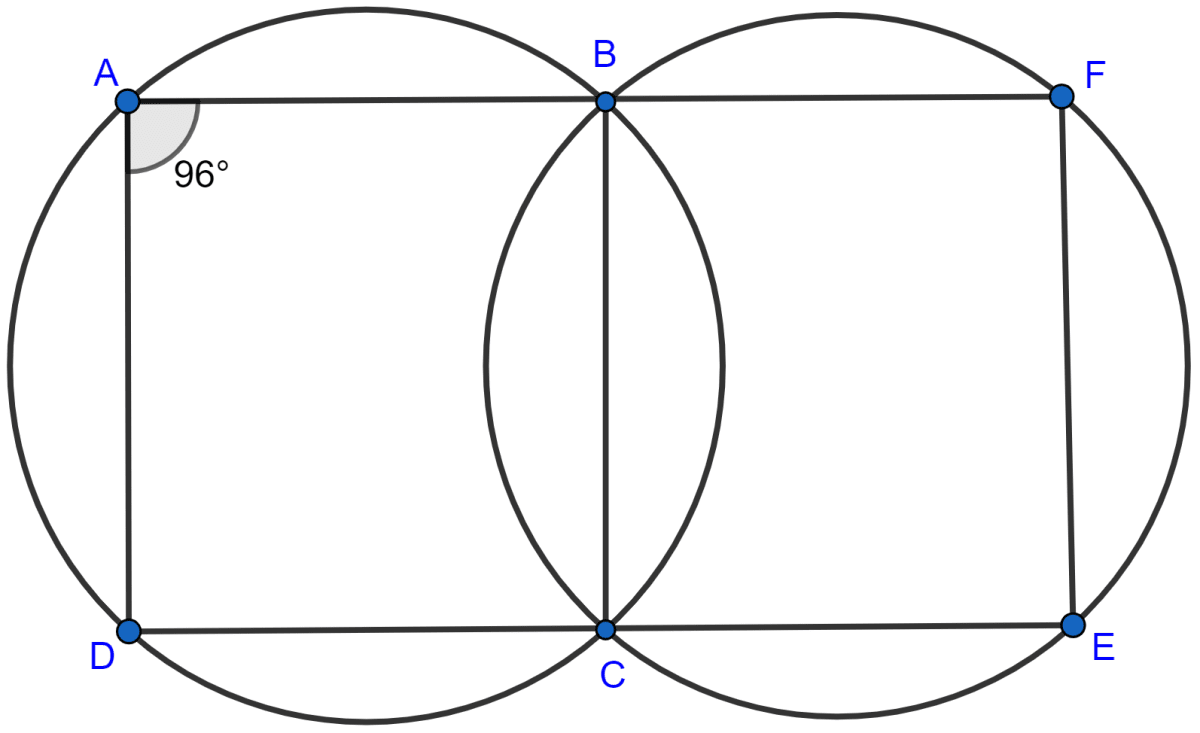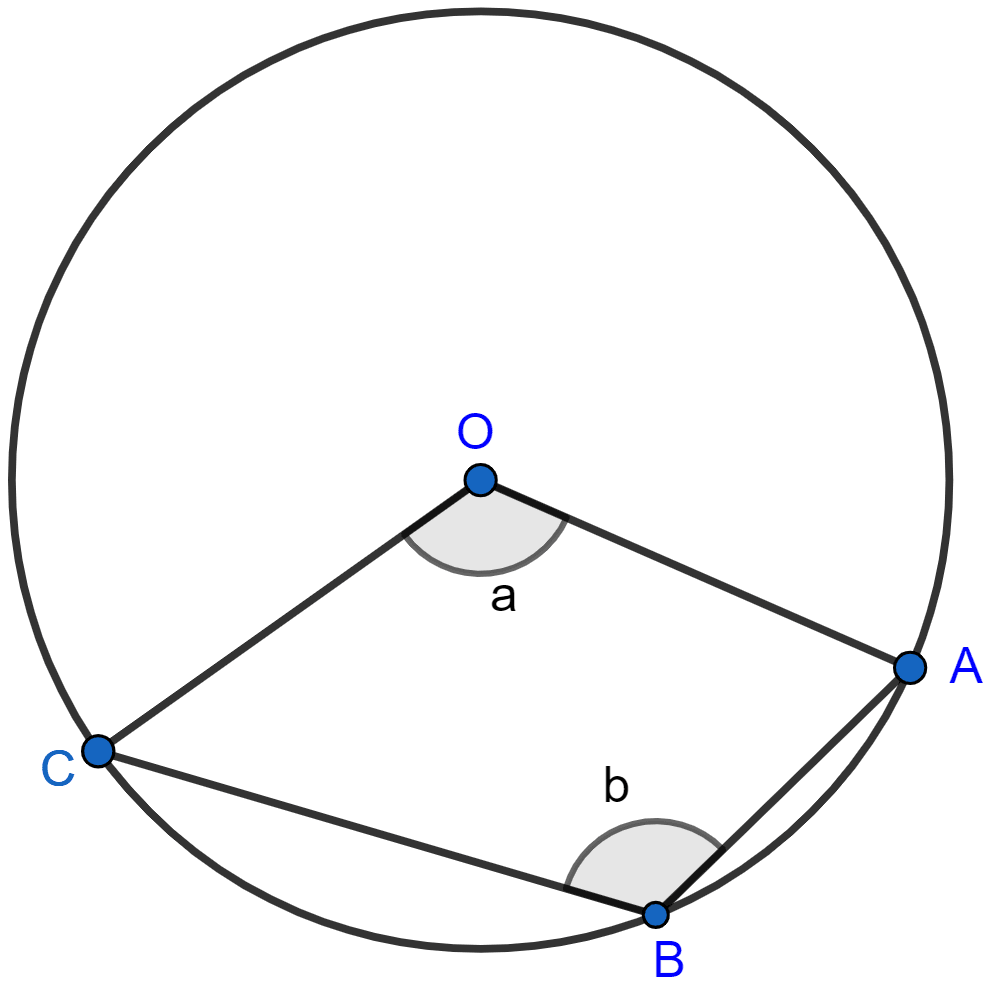Mathematics
Prove that:
(i) the parallelogram, inscribed in a circle, is a rectangle.
(ii) the rhombus, inscribed in a circle, is a square.
Circles
8 Likes
Answer
(i) Let's assume that ABCD is a parallelogram which is inscribed in a circle.

⇒ ∠A = ∠C and ∠B = ∠D [Opposite angles of a parallelogram are equal]
⇒ ∠A + ∠C = 180° and ∠B + ∠D = 180° [Pair of opposite angles in a cyclic quadrilateral are supplementary]
⇒ 2∠A = 180° and 2∠B = 180°
⇒ ∠A = 90° and ∠B = 90°
⇒ ∠A = ∠C = 90° and ∠B = ∠D = 90°.
Also,
AB = CD and AD = BC [Opposite sides of parallelogram are equal]
Hence, proved that ABCD is a rectangle.
(ii) Let's assume that ABCD is a rhombus which is inscribed in a circle.

So, we have
∠BAD = ∠BCD [Opposite angles of a rhombus are equal]
From figure,
∠BAD + ∠BCD = 180° [Pair of opposite angles in a cyclic quadrilateral are supplementary]
⇒ 2∠BAD = 180°
Thus, ∠BAD = ∠BCD = 90°.
Also,
∠ABC = ∠ADC [Opposite angles of a rhombus are equal]
From figure,
∠ABC + ∠ADC = 180° [Pair of opposite angles in a cyclic quadrilateral are supplementary]
⇒ 2∠ABC = 180°
Thus, ∠ABC = ∠ADC = 90°.
Since, each side of rhombus are equal.
Thus,
Each angle of quadrilateral = 90° and all sides are equal.
Hence, proved that ABCD is a square.
Answered By
5 Likes
Related Questions
In the following figure,
(i) if ∠BAD = 96°, find ∠BCD and ∠BFE.
(ii) Prove that AD is parallel to FE.

In the given figure, AB = AC. Prove that DECB is an isosceles trapezium.

The figure given below, shows a circle with centre O.
Given : ∠AOC = a and ∠ABC = b.
(i) Find the relationship between a and b.
(ii) Find the measure of angle OAB, if OABC is a parallelogram.

ABCD is a parallelogram. A circle through vertices A and B meets side BC at point P and side AD at point Q. Show that quadrilateral PCDQ is cyclic.